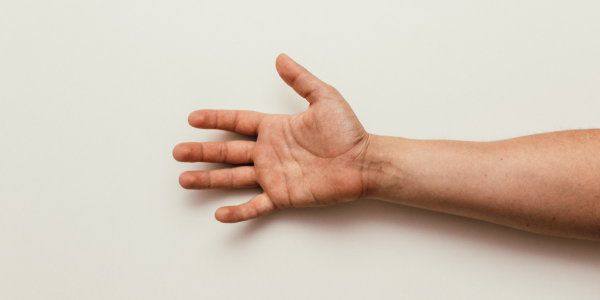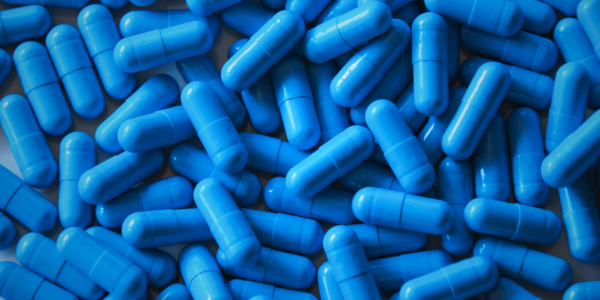
Do Testosterone Injections Hurt?

Testosterone injections are often the most economical option and allow for the greatest control when it comes to optimizing hormone levels. But do Testosterone injections hurt?
The answer is: It depends.
Read on to learn more about how to predict your specific pain levels for Testosterone injections, and what you can do to minimize Testosterone injection pain.
Factors that Impact Injection Pain
Testosterone injection pain can vary based on a several factors:
- Whether you’re using subcutaneous injections or intramuscular injections
- The needle size and gauge
- The oil vehicle used in the Testosterone solution
- Type of Testosterone ester
- The injection technique and injection site
- Your pain threshold and pain tolerance
In general, when administering intramuscular (IM) injections some people experience a slight ‘pinching’ sensation, along with mild soreness that can last 1-3 days, on average. Most patients who do experience soreness after the initial IM injection report that they no longer experience soreness after administering a few injections.
Subcutaneous injections usually do not produce injection pain or soreness. This is because a smaller needle is used, reducing site trauma. In addition, subcutaneous Testosterone is usually compounded in an oil vehicle that is less viscous (thinner) than commercial oils, therefore eliminating another possible cause of site soreness.
Testosterone Injection Pain Level: Subcutaneous Injections Versus Intramuscular Injections
A subcutaneous injection, or subq injection, is delivered into the fatty layer beneath the skin. An intramuscular injection, or IM injection, is delivered into the muscle, usually into the thigh, shoulder, or hip.
Subcutaneous injections are typically less painful than intramuscular injections, because the needle is smaller. Subq injections also don’t penetrate the skin as deeply as intramuscular injections.
Despite IM injections being a little more invasive, they also have benefits. Since there are more blood vessels in the muscle, Testosterone can be absorbed more quickly by the body through IM injections. In addition, intramuscular injections are often necessary for larger doses of medication.
Some people may be concerned that injecting into fat will reduce the absorption of Testosterone, but this has been shown be a myth. There are several studies showing the absorption of Testosterone in subcutaneous tissue. Also, when observing obese patients undergoing long term Testosterone therapy there is no significant difference in T levels between different body types administering subcutaneous injections.
Depending on your unique protocol and dosage, you may require Testosterone injections subcutaneously or via intramuscular injections. You can ice the injection site or purchase a topical numbing cream to help decrease injection pain. We’ll discuss other pain management strategies throughout the article.
Grapeseed Oil versus Cottonseed Oil: Which Is Less Painful?
Commercial and brand Testosterone injections typically contain cottonseed oil as the vehicle.
Cottonseed oil is a suitable vehicle for intramuscular injections, but due to its thick viscosity, some patients experience injection soreness that lasts until the medication has been dissolved. Cottonseed oil is also difficult to administer with a subcutaneous injection since it’s too thick to easily pass through small gauge needles
Compounding pharmacies like the ones Defy Medical partners with offer Testosterone esters in grapeseed oil (GSO), which is thinner. GSO allows Testosterone to pass through a small needle for subcutaneous injection. Patients who are sensitive to injections have reported reduced pain and irritation post-administration when switched to GSO.
Testosterone Injection Pain Based on Testosterone Ester
The type of Testosterone you’re using can also make a difference when it comes to Testosterone injection pain.
Testosterone is combined with different esters, which create a timed-release effect. The type of Testosterone is determined by the ester with which it’s combined. Examples of Testosterone types include:
- Propionate
- Cypionate
- Undecanoate
- Enanthate
- Compounded combinations of the above esters
Testosterone propionate can be inflammatory to some patients due to the nature of the ester. Most patients have reported more post-injection soreness after administering propionate than with any other common ester.
Using a compounded ester blend containing propionate and cypionate might help eliminate propionate-related injection soreness. Patients have reported relief from injection pain when they switched from propionate alone to a blended ester.
Testosterone Injection Technique and Injection Site
When asking do Testosterone injections hurt, it’s important to consider injection technique and the injection site.
It’s crucial to inject Testosterone correctly. Read our in-depth article on How to Inject Testosterone to make sure you’re doing everything you can to avoid additional pain, plus other problems like infection or injecting into a blood vessel.
Here are a few quick tips for reducing pain during injections:
- Use a fresh and sterile needle, syringe, and alcohol wipe each time
- Use the right-sized needle for the type of injection you’re performing. Unnecessarily large needles can increase pain
- Always use an alcohol wipe to clean the injection site, and then wait until the alcohol dries before injecting. Wiping the skin helps sterilize the area, and waiting until the skin dries helps avoid a stinging sensation from the wet alcohol.
- Use a different needle for drawing the testosterone than you do for injecting. Drawing the medication from the bottle will likely dull the needle, which can make the injection more painful. Using a new needle also helps keep the injection sterile.
- If blood seeps back into the syringe, you’ve likely hit a blood vessel. Remove the needle and dispose of the needle, syringe, and medication. Try again with a fresh setup.
- Gently tap the syringe and push down on the plunger to gather and remove any air prior to injecting.
- Inject the medication carefully and consistently. Injecting Testosterone too quickly can cause a stinging sensation and unnecessary pain.
- Hold the needle at the appropriate angle. For IM injections, it’s a 90-degree angle. For subcutaneous injections, it’s either a 90-degree angle if you can pinch two inches of skin, or a 45-degree angle if you can pinch one inch of skin.
- Use the right amount of pressure and don’t jab the needle roughly into your skin. By using the strength of your wrist to guide the pressure, you can keep the injection steady but gentle.
Where you inject Testosterone is an important factor in Testosterone injection pain.
There are multiple injections sites to choose from, and they vary depending on whether you’re performing subq injections of IM injections.
Subcutaneous injection sites include:
- The stomach
- The upper arm
- The glutes
- The thighs
Intramuscular injection sites include:
- The tops of the thighs
- The shoulder
- The hip muscles
You may find that certain sites are more painful than others. For example, if you’re very lean through the abdomen, the stomach might not be a good place for a subcutaneous Testosterone injection. Try an area with a thicker layer of fat.
You may also find that certain injection sites are naturally more sensitive. Try each site to see what works best for you.
Remember to rotate injection spots.
If you continue to inject in the same place every day, you’ll likely experience injection site fatigue.
Using different injection sites can help reduce pain, because you avoid repeated injections into the same place. You can put together a schedule so that you can regularly rotate your injection spots and keep track of where you’ve injected.
Pain Threshold and Pain Tolerance
- Pain threshold is the minimum point at which a stimulus causes pain.
- Pain tolerance is the highest amount of pain a person can tolerate.
These two factors vary from person to person, which makes pain difficult to predict.
Your personal pain threshold and pain tolerance are often determined by factors like genetics, sex, stress levels, age, whether you experience chronic illness, and many more.
To get an understanding of your own pain threshold, think about the last time you received an injection, whether it was a vaccine or another medication. Did you find it only mildly uncomfortable, or was it a more painful experience?
Analyzing your past experiences with injections and needles can help you understand your own tolerance for injection-related pain.
If you find that you naturally feel more pain during injections, you can numb the area with an ice cube or purchase a pharmaceutical-grade numbing cream.
So, Do Testosterone Injections Hurt?
As we’ve discussed, it can depend on:
- Your own pain threshold and tolerance
- The area in which you inject
- Your injection technique
- Whether your injection is subcutaneous and intramuscular
- The oil vehicle
- The type of Testosterone
- and other factors.
By following the recommendations above, you can help limit Testosterone injection pain.

So, Do Testosterone Injections Hurt?
At Defy Medical, we’re always looking for ways to improve our patients’ experience and to make their protocols as comfortable possible. When you become a Defy Medical patient, you receive access to our in-depth and individualized care.
Ready to learn more?
Get Started

